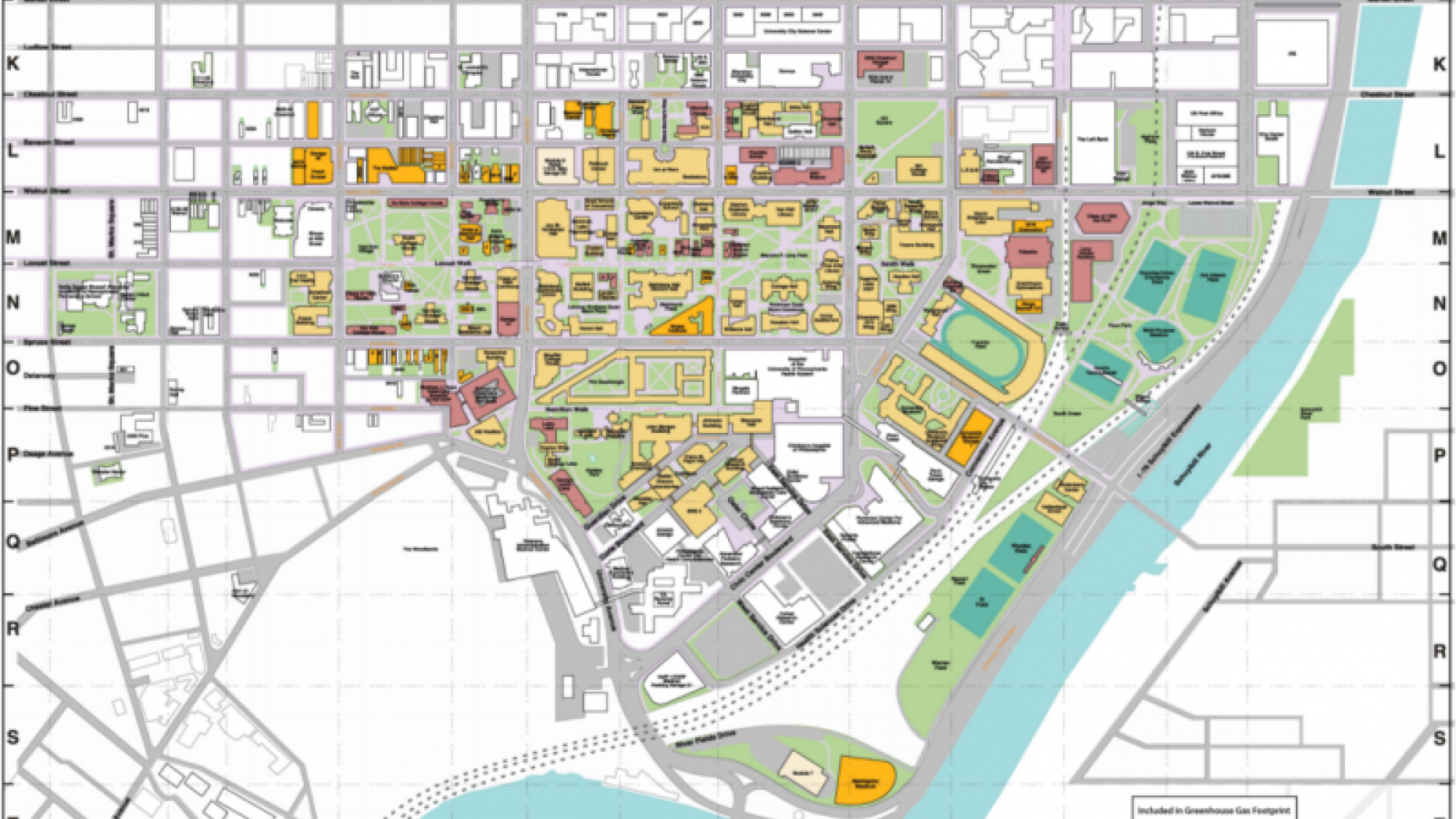Center for Environmental Building & Design: Energy Modeling at Penn

University of Pennsylvania campus building map, utility connections labeled, Carbon Action Plan Report, 2012.
Stuart Weitzman School of Design
102 Meyerson Hall
210 South 34th Street
Philadelphia, PA 19104

University of Pennsylvania campus building map, utility connections labeled, Carbon Action Plan Report, 2012.
Since 2006, when an initial Sustainability Plan was prepared for the University of Pennsylvania, the Center for Environmental Building & Design (CEBD), a faculty research and consulting unit located in the School of Design, has been at the center of the University’s environmental efforts. The University's environmental efforts are summarized in an Executive Summary of their Climate Action Plan 2.0. The CEBD was commissioned to prepare and provide technical input and analysis, and provided most of the data and research used as the foundation for the 2007 Climate Action Plan 1.0. Since then, the CEBD has been auditing individual buildings on campus in order to collect data that will help assess where energy consumption on campus is highest and where it is feasible to cut down on energy consumption in order to lower the University’s carbon footprint overall.
To achieve this, the CEBD proposes 1) the standardization of the reporting of building energy consumption data, 2) refinement of the analysis of building performance, and 3) protocols or an energy intelligence filter to make the data from the SCADA (Supervisory Control and Data Acquisition System) system more useful. An ongoing comprehensive performance assessment using a BPAT (Building Performance Assessment Tool) developed by CEBD researchers, combined with “walk-around” audits of buildings has allowed the University to identify buildings in need of renovation and upgrade.
According to the University of Pennsylvania’s Main Campus: Building Benchmarking and Energy Reduction Plan, the built environment of the University of Pennsylvania accounts for approximately 85% of the carbon produced by the main campus through the use of electricity, stem, and chilled water. A second revised Carbon Action Plan 2.0 was realized in 2013-2014 which projected updated numbers for the potential for carbon reductions, made possible by more accurate meter data, and a financial calculator enlisted to estimate the cost and effectiveness of each renovation plan. The University of Pennsylvania Carbon Reduction Plan was supported by a devoted team led by Associate Professor of Architecture William Braham, prior Professor of Architecture, Ali Malkawi, prior Lecturer, Muscoe Martin and Research Associates from the Masters of Architecture Program at the School of Design as well as by Anne Papageorge, Vice President of the Facilities and Real Estate Services Administration, David Hollenberg, University Architect, Daniel Garofalo, Environmental Sustainability Coordinator and Sara Abroms, Assistant Environmental Sustainability Coordinator.